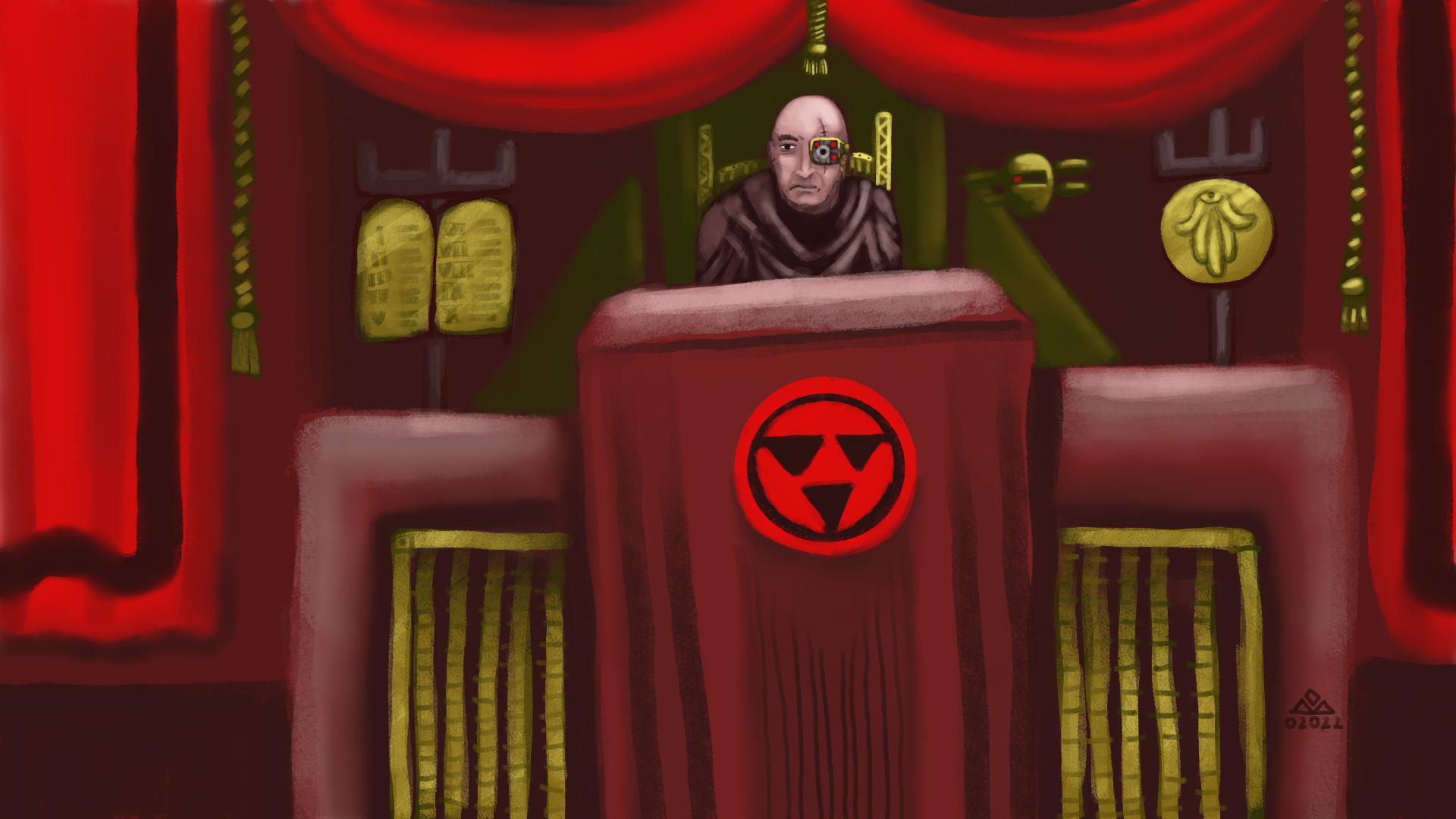History
The Church of God was a religion founded by the Cosmid corporation as part of a mind control experiment on the planet Midori. Either despite, or because of this, it ended up as one of the founding institutions of the Holy Empire of Man, and conquered much of the galaxy. The Church of God combined elements from Judaism, Christianity, and Islam.
After its founding, the Church added much support to the independence movement on Midori, and from there spread like wildfire among the frontier worlds on the galaxy's eastern limb. This rapid spread was helped along greatly by a strong force of idealistic missionaries, led in large part by Saint Valgar, who set the standard for making conversions and crushing heresies.
A major turning point occurred when one faction of the Church encountered an ambitious young general from the Planetary League, one Potus Clarke, who was a rising star in the military, and quickly became one in the church as well.
When the Planetary League made contact with the Empire of 1,000,000 Suns, Clarke took a dominant leadership position in pushing the Church's agenda in public. Behind closed doors, Clarke's influence grew rapidly as well, as he was able to raise funds and support from his business and military contacts. Then, on the Church's highest holy day, the Feast of the Patriarchs, the three heads of the Church (the Ayatollah-maximus, the Supreme Rabbi, and the Uber-Pope) crowned Clarke as Emperor of all Mankind. (A claim that would be asserted through countless years of bloody warfare, known as the Great Reckoning).
Later, at the close of the War of the Empires, Clarke would be elevated to godhood, (officially being declared to be the Manifestation of God in the Galaxy).
The orthodox (imperial) branch of the Church would not survive the War of Galactic Unification in any recognizable form, although a few obscure sects did remain.
Cosmology
The Church of God believes in a hierarchical universe, generally consisting of nine levels.
God (later including the Emperor)
The four Patriarchs (the Emperor became the fifth Patriarch after the Great Reckoning)
The Angels and the Saints
The Church of God
*Man* (an idealized vision of the human race)
Any mortal being considered to be "the Other" (heretics, aliens, cyborgs, etc., basically any real being)
Demons and Apostates
The "Lords of Hell" (the most powerful Daemons, demigods and other supernatural beings)
The Devil (a single entity embodying evil, its self)
Church Hierarchy
The Imperial version of the Church of God operated under a top-heavy, and cumbersome hierarchy led by the Emperor, himself. Directly under the Emperor were the three original heads of the Church.
The Ayatollah-Maximus was in charge of the Church's military operations, and acted as the Commander in Chief of the Empire's armed forces. One of the most feared elements of this Imperial war machine was the Purification Fleet.
The Supreme Rabbi headed the Church's economic systems, and acted as the leader of the Empire's command economy. The Imperial Commerce Guild was the main agency to enforce the Supreme Rabbi's will.
The Uber-Pope was the leader of the cultural/religious operations of the Church, and oversaw the spiritual lives and inner thoughts of all imperial subjects. The Uber-Pope's enforcement arm was known as the Hamsa.
Each of these leaders commanded an extensive bureaucracy of priests, monks, nuns, deacons, imams, rabbis, and other officials who controlled the lives and thoughts of everyone in the Church. The rules were strict, and the punishments for breaking them were horrific. Discipline was imperative.
Holidays
The Church observed five major holidays each year. One feast day was set aside for each of the original four patriarchs (Abraham, Moses, Jesus, and Muhammad), plus the most important holiday, the Feast of the Patriarchs, which celebrated all of them together. After the Emperor became an official patriarch, the Feast of the Patriarchs was renamed "The Feast of the Emperor". There were also a slew of minor feasts and festivals observed throughout the year, many celebrating some Saint or commemorating a historical event. Many local branches of the Church had their own local holidays as well.
Emblem
The emblem of the Church of God is a set of concentric circles. The innermost white circle represents God, ringed by a black space representing the space between the divine and the mortal realm. The middle white circle represents the Church, surrounded by a black space representing "the world". The outermost white circle represents "creation", or the universe.









